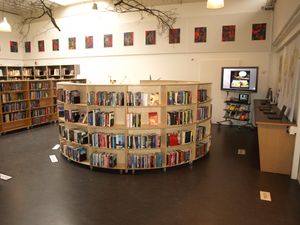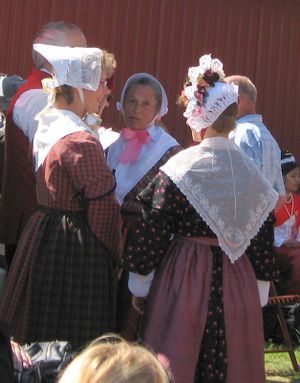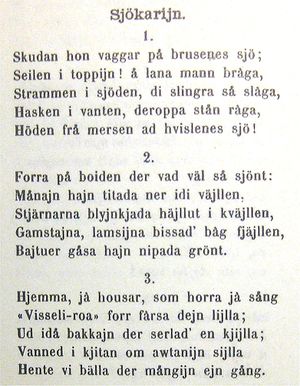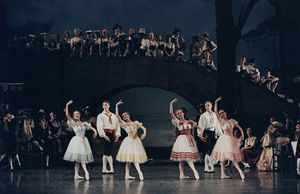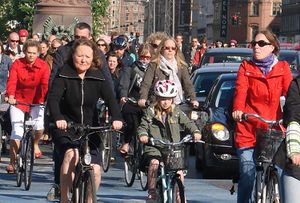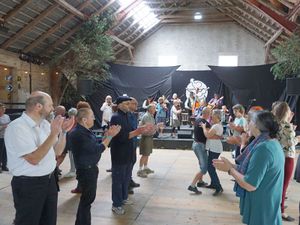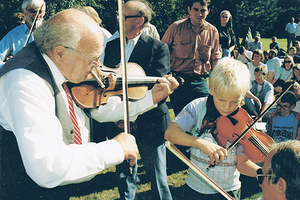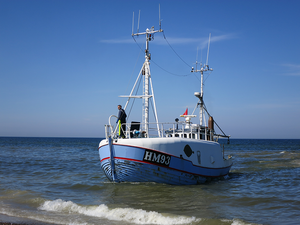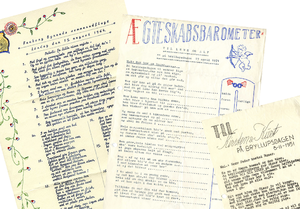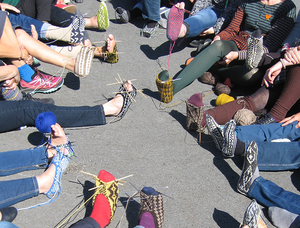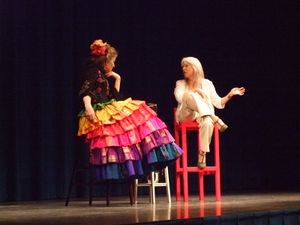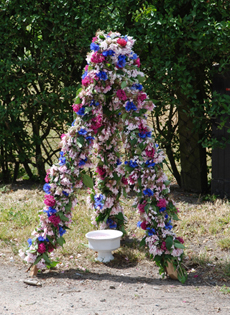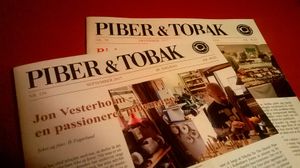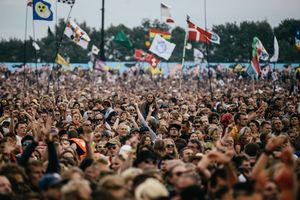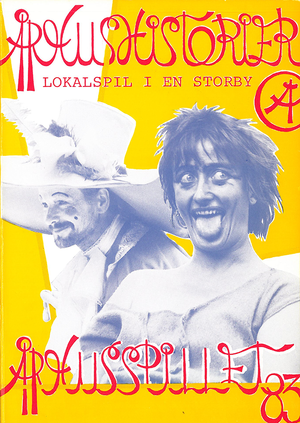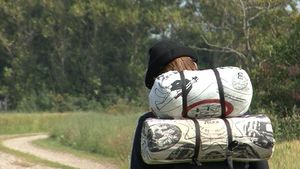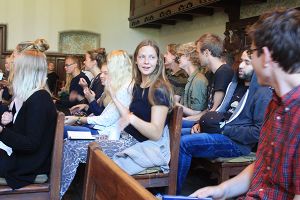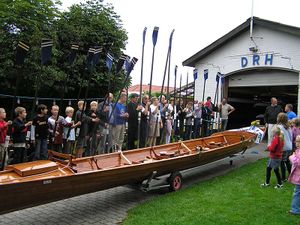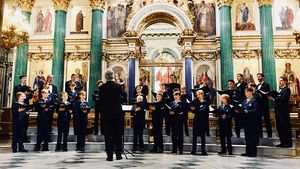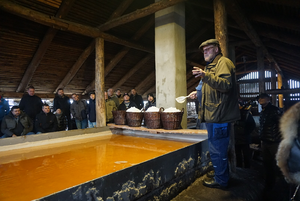English summary
Living culture – an inventory of intangible cultural heritage in Denmark
The inventory is part of the work with UNESCO's Convention for the Safeguarding of the Intangible Cultural Heritage. The countries that have joined the convention create one or more inventories of living, intangible cultural heritage in their own country.
According to the convention, the inventory is a tool to identify, describe and disseminate knowledge about different examples of intangible cultural heritage. The inventory is a living document with examples of intangible cultural heritage submitted by the communities of practitioners themselves. Every third year contributors are encouraged to update their contribution.
If you wish to submit an example of intangible cultural heritage in another language than Danish, please contact The Danish Folklore Archives at The Royal Danish Library.
Communities applying for the international lists must first be able to show that the proposed element is included in a national inventory.
Danish School Libraries
The contribution is submitted by Kommunernes Forening for Pædagogiske Læringscentre.
“In an educational and in a world perspective, the Danish School Libraries are unique. Danish school libraries are rooted in a long cultural tradition of disseminating good children’s literature. The school library is a portal to the wonderful realm of fiction and to the unique knowledge of non-fiction. School libraries enable access to knowledge, experiences, education and access to the World.”
Making historical costumes on Bornholm
The contribution is submitted by Lene Steenbuch.
“At the Medieval Center on Bornholm and among groups of folk dancers, people create 19th Century costumes from Bornholm and costumes from medieval times.”
Bornholm language
Contribution submitted by Kim Tørnstrøm , Lillian Hjorth Westh and Ivar Lærkesen.
"After losing Scania in 1658, the Bornholm language is the only existing example of an Eastern Danish dialect in Denmark, except for a few trends in Dragør and Skovshoved. A fact that leaves people on Bornholm with a sense of linguistic isolation but also sets Bornholm language as a significant identity marker."
The Bournonville ballet tradition
Contribution submitted by representatives of Royal Danish Theatre.
"The ballet school of the ballet master August Bournonville has been passed on from generation to generation for almost two centuries. The steps and the repertoire represent a particular way of dancing, particular aesthetics and mimic gestures."
Cycling
The contribution is submitted by Danish Cyclists' Federation.
"Denmark is one of the countries in the world where most people bike around. Today most Danes learn to ride a bike before the age of 10 and about 50% of all Danes ride a bike several times a week. To many the bike is much more than just a means of transportation."
Danish Folk dance
Contribution submitted by Hanne Troen
“Danish folk dance is rooted in the dance culture of Western Europe as it existed all over Europe from around 1750 to 1850. Through adaptions to locale conditions, a Danish folk dance culture exists today in its own manner with a particular sound and way of dancing.“
Danish folk music
Contribution submitted by president of The National Folk Musicians, Poul Bjerager and folk musicians Jesper Vinther and Henrik Jansberg.
"Danish folk music traditions are part of the intangible cultural heritage in Denmark. The traditions encompass a variety of music, dances and songs that encapsulate several hundred years of repertoires and expressions including those of today."
The clinker boat
The contribution is submitted by representives of the Danish Viking Ship Museum, Han Herred Sea Boat Association and the Wooden Ship Association
"The clinker boat is a particular Nordic boat type, which during the last 2000 years has had great impact on shaping Denmark as a seafarers’ nation. The boat has varied in shape and size. Depending on the purpose and use as well as for whom it was built and the materials available."
Occasional song
The contribution is submitted by film producer and author Ebbe Preisler
"The typical occasional song is a sing-along written for a specific event and is based on a well-known tune. In Denmark, the phenomenon dates back to the 17th Century. The genre also contains examples of songs written for a specific event on a newly composed tune and sung by a choir or a single person."
Knitting
The contribution is submitted by Agnete Rasmussen, a representative of the knitting association, Gavstrik
"People have always knitted and will probably continue to do so. However, if the tradition is to maintain its popularity, the craft needs safeguarding through visibility and educational efforts."
Story telling
The contribution is submitted by storytellers Vigga Bro and Lise Marie Nedergaard
"The theatre, the novel and the folk song are rooted in the art of telling stories. From the outset of a basic storyline the storyteller creates the story through improvisation and engagement with the audience. Both professionals and amateurs tell stories."
Kildefesten in Svaneke
Contribution submitted by Eigil Viggo Jensen, member of the Kildefest Committee "The celebration stems from a heathen ritual of bringing the sick and the weak to the holy spring to let them drink of the health-giving spring during Midsummer. An event still celebrated in Svaneke on Bornholm."
Pipe smoking
The contribution is submitted by Nordic Smoker's Guild
"Pipe smoking has been a living tradition in Denmark since the 17th Century. Internationally, Danish pipe makers are recognized for their skills."
Roskilde Festival
The contribution is submitted by the Roskilde Festival Group
"Roskilde Festival is the biggest music festival in Northern Europe and one of the oldest still existing festivals in the world."
Community Plays
Contribution submitted by John Andreasen "Between 1970 and 2017, about 700 community plays were put on production in Denmark. The number of participants – behind and on stage – can vary from 10 to over a 100 people. Most plays are based on historical events and are typically arranged by non-professional actors supported by friends, family and the local community.”
May Tee celebration
Contribution submitted by Strynø Majtræsforening "Every year on Strynø, an island in the archipelago of Funen, people come together for the May Tree celebration. Men hoist the May Tree, women decorate the garlands for the tree and children bring forth the flag to celebrate the coming of summer."
Contribution submitted by Suzi Apelgren: “At går på valsen” is to travel and develop as a craftsman through exchange of craft and culture. The tradition is most common in Central Europe. Right now, there are between 400 and 600 travelling craftsmen. Only one of whom is Danish. Within the last two years, two Danish travelling craftsmen have returned home. The returned craftsmen develop a lifelong brotherhood.”
The Danish Folk High School
Contribution submitted by Højskolehistorisk Forening: “The values of the Folk High School are disseminated through the language and the stories, through talks and songs, and through the homely atmosphere of living in a boarding school. It is an intangible cultural heritage which impacts many people’s view on life and their everyday culture.”
The coexistence of minority and majority by the Danish-German border
contribution submitted by Bund Deutscher Nordschleswiger and Sydslesvigsk Forening “In the Danish-German border region minority and majority live in peaceful coexistence. Following decades of conflict, a fruitful coexistence and collaboration have developed during the past decades. Today, the presence and activities of the minorities are regarded as adding value to the region."
The classical European chapel choirs
Contribution submitted by The Copenhagen Royal Chapel Choir by Ebbe Munk.
“The classical European chapel choirs, the associated choir schools and their connection to their cities represent a unique cultural heritage and constitute the foundation of the European choir tradition and the development of classical music. For over 800 years, this world of sound and tradition has influenced the international music scene.”
Salt seething on Læsø
Contribution submitted by Poul Christensen.
"Since 1991, Læsø Salt Seething has resumed the tradition of seething salt on the beach meadows facing south in a reconstructed medieval environment. Like in the Middle Ages, the salt production relies on a unique commodity: the highly salty groundwater. They use local wood in the process of heating and evaporation. They produce salt year round and accommodate between 70.00 and 75.000 visitor during the year. The visitors get to see the production and learn about the cultural history."
